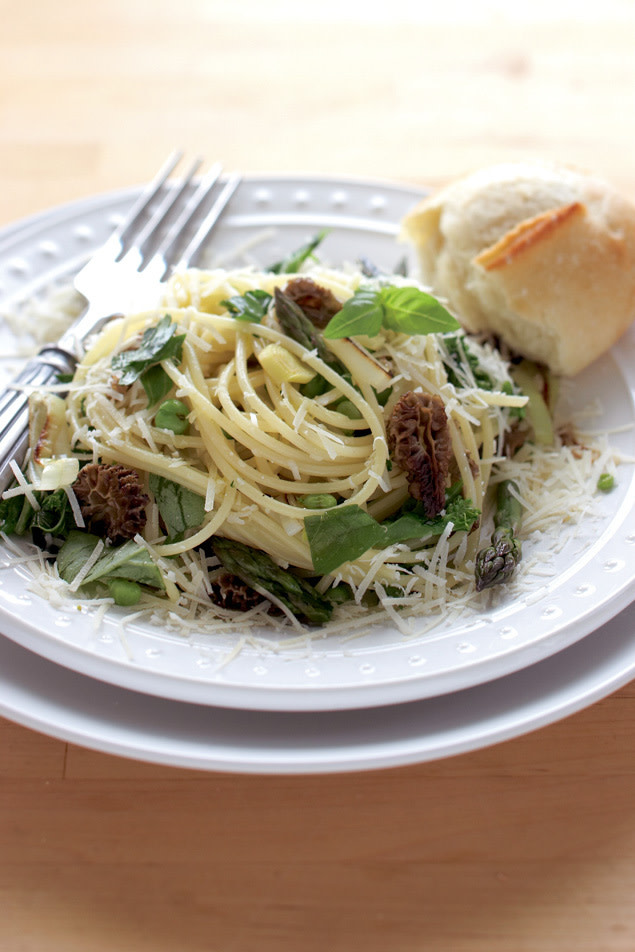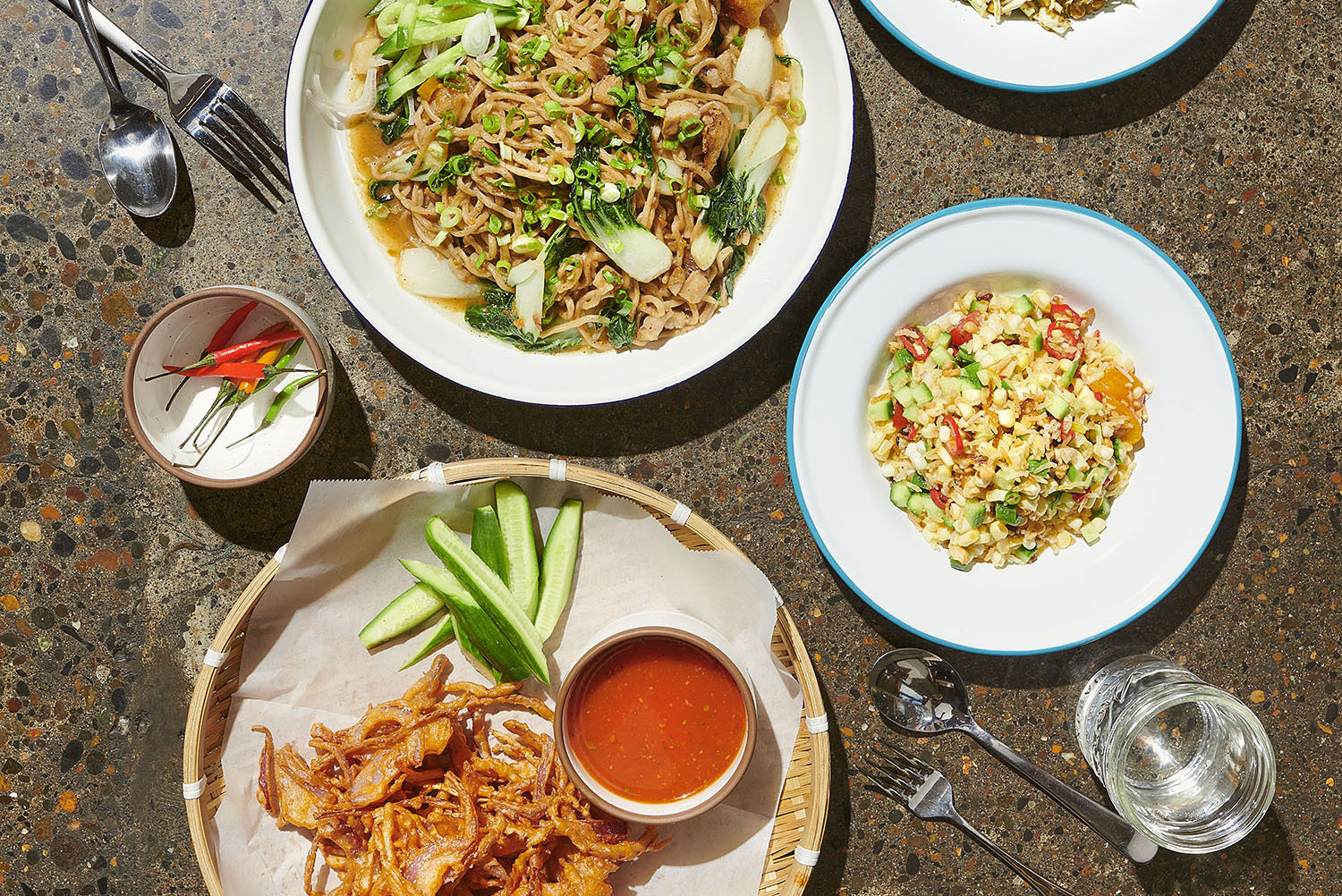Tastes of Spring

Image: Lara Ferroni
ONCE THE DARLING of hot-spot dining establishments and the "it" dinner-party entrée of budding gourmets everywhere, pasta primavera has fallen on hard times. Ubiquitous to the point of boring, the dish shows up these days on the menus of cafeterias and chain restaurants; in grocery-store aisles, you’ll even find frozen TV dinner versions. Compromised as it has been by gluey white sauces and freezer-burned veggies, it’s no wonder this dish has become the laughingstock of serious chefs.
Enough is enough. It’s time to reclaim pasta primavera and return it to the respected status it once enjoyed: as a well-tuned symphony of texture and taste, inspired by the sweet, tender vegetables we have on hand each spring.
Such a transformation, however, requires digging up the dish’s roots. Pasta primavera’s origins are debated to this day, but the most popular story goes like this: During a trip to Canada in May 1976, Sirio Maccioni, an Italian chef and owner of New York City’s opulent French restaurant Le Cirque, improvised for a group of friends a simple pasta with a light cream sauce and whatever veggies his hosts had on hand. The entrée was a hit, and Maccioni christened it pasta primavera, or "spring pasta." One of the diners that day was Craig Claiborne, a food writer for the New York Times, who subsequently raved about the innovation to colleagues back home, one of whom eventually wrote about it in a review of Le Cirque. Maccioni, knowing a good thing when he found it, made primavera a standard off-the-menu item for those in the know, and it is still served at the restaurant to this day. Home cooks embraced and began embellishing Maccioni’s formula, starting in 1977 with a recipe for "spaghetti primavera" that Claiborne ran in the Times.
A dish with this much original appeal deserves a second chance. So we asked one of Portland’s most skilled pasta impresarios, Tommy Habetz, the executive chef at Meriwether’s, to help us rescue pasta primavera from its slump. For his recipe, he chose ingredients available in Portland’s farmers markets–such as leeks and ramps (wild onions)–as well as morels and asparagus, iconic foods of the Pacific Northwest. By omitting the tomatoes and cream usually found in the classic recipe, Habetz says his version "is more local, lighter and more modern."
Pasta primavera, buon giorno. And welcome back.

Spaghetti Primavera
Recipe Courtesy Tommy Habetz
If you can’t find fresh morels, Tommy Habetz suggests using one-third the amount of dried, reconstituted morels. You can substitute scallions or green onions for the ramps if you have trouble finding them. Green garlic–the fresh shoots of immature garlic plants–can be found at area farmers markets from early to mid-spring.
Serves 4
INGREDIENTS
- 2 tbsp extra virgin olive oil, plus more to taste
- ¼ cup ramps, sliced
- ¼ cup green garlic, sliced
- ¼ cup leeks, green parts trimmed and discarded, white parts sliced
- ¼ lb morels, cleaned and sliced in half
- 1 lb spaghettini (preferably De Cecco brand)
- 6 stalks asparagus, woody ends removed, sliced ¼-inch thick
- 2 cups rapini (broccoli rabe), chopped
- ½ cup fresh shelled English peas
- 1 handful basil, roughly torn
- 1 handful flat-leaf parsley, roughly chopped
- Grated parmigiano reggiano to taste
- Salt and pepper to taste
- Bring a pot of salted water to a boil.
- Meanwhile, heat olive oil over medium-high heat in a medium sauté pan. Add ramps, green garlic, leeks and morels, and cook until tender, about 5 minutes. Turn heat to low.
- Add pasta to boiling water.
- While pasta is cooking, place a colander above the boiling pasta water, and add asparagus, rapini and peas to the colander to steam them.
- When pasta is al dente (about 6-8 minutes), add steamed, drained vegetables to sautéed vegetables and increase heat to medium.
- Drain pasta, reserving 2-3 tbsp of pasta water.
- Add pasta and reserved pasta water to vegetables along with basil and parsley, plus parmigiano reggiano, salt, pepper and more olive oil to taste.
- Stir to combine.




